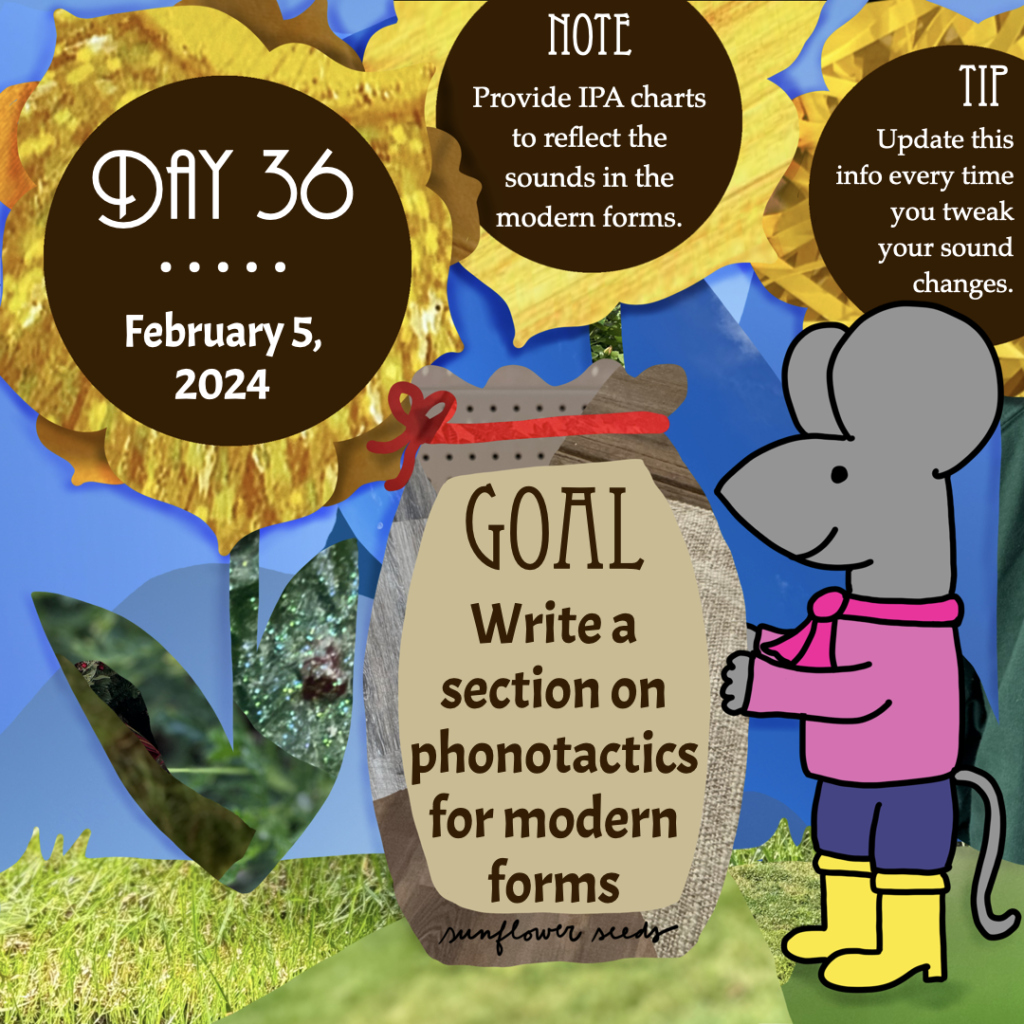
Goal: Write a section on phonotactics for modern forms
Note: Provide IPA charts to reflect the sounds in the modern forms.
Tip: Update this info every time you tweak your sound changes.
Work focus: Solidify/Write/Share
In yesterday’s prompt, I provided this basic template you might follow for documenting your language’s sound information. Today’s prompt expands that to include sections documenting the sounds and patterns in the modern forms of your language, as seen in sections (4) and (5) added here:
- Proto-sound inventories (both consonant and vowel charts)
- Proto-stress and phonotactics (information on how syllables come together and where longer units carry stress)
- Sound changes (ordered and numbered so I can easily refer back to them later, and for every sound change, I like to include an example or two to make sure I remember how the sound change works)
- Modern sound inventories (both consonant and vowel charts)
- Stress and phonotactics (syllable structures and stress and/or tone in modern forms)
Once you have applied the sound changes, how do they affect the consonant and vowel IPA charts? Were any sounds lost? Any new sounds gained? Did the sound changes affect the possible syllable structures in your language? Perhaps new consonant clusters are possible. Or perhaps coda consonants were lost. Whatever the case may be, describe the current state of the shapes syllables can take in your language’s modern forms. Finally, write a description of the stress patterns (or tone development) in your language’s modern forms.
Note that all this expanded information applies only to the modern forms. That is, you should not overwrite the information on the proto-forms but instead add sections to show the patterns that emerge in your modern forms based on the sound changes you created.
When you need to create more proto-forms to expand vocabulary, make sure you always go back to the proto-sound inventories and phonotactics—not the modern ones. Your proto-forms should only reflect the sound patterns from the proto-stages of your language.
